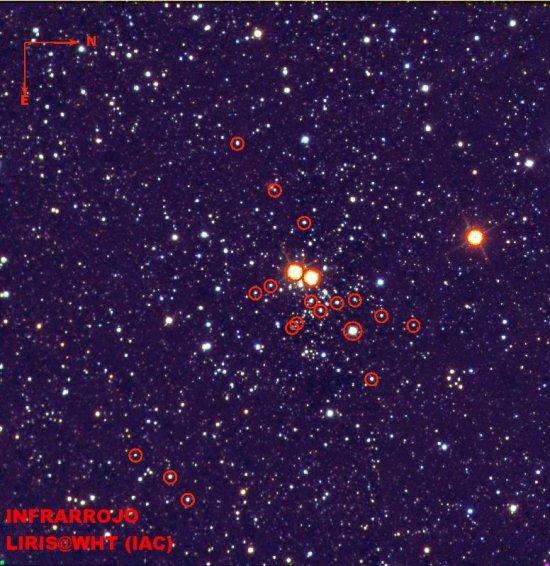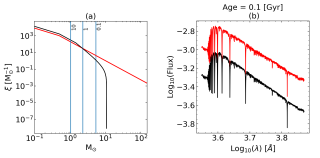Recent near-infrared data have contributed to the discovery of new (obscured) massive stellar clusters and massive stellar populations in previously known clusters in our Galaxy. These discoveries lead us to view the Milky Way as an active star-forming machine.
Aims: The main purpose of this work is to determine physically the main parameters (distance, size, total mass and age) of Masgomas-1, the first massive cluster discovered by our systematic search programme.
Methods: Using near-infrared (J, H, and KS) photometry we selected 23 OB-type and five red supergiant candidates for multi-object H- and K-band spectroscopy and spectral classification.
Results: Of the 28 spectroscopically observed stars, 17 were classified as OB-type, four as supergiants, one as an A-type dwarf star, and six as late-type giant stars. The presence of a supergiant population implies a massive nature of Masgomas-1, supported by our estimate of the cluster initial total mass of (1.94±0.28)·104 M⊙, obtained after integrating the cluster mass function. The distance estimate of (3.53±0.33) kpc locates the cluster closer than the Scutum-Centaurus base but still within that Galactic arm. The presence of an O9V star and red supergiants in the same population indicates that the cluster age is in the range of 8 to 10 Myr.



